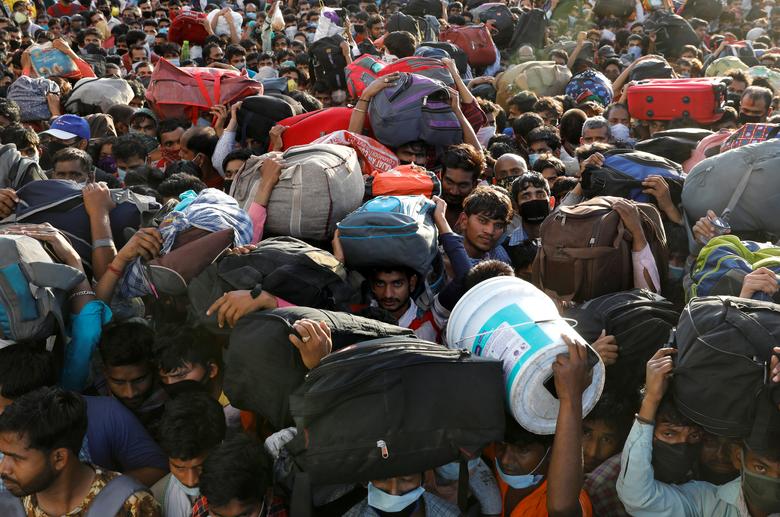
- ARAB NEWS
- 30 Jun 2025

Indian Prime Minister Narendra Modi last week made a very big call by announcing a stringent 21-day lockdown — beginning just four hours after his announcement — on everything but essential services. He chose this shock over the prospect of the coronavirus, which was limited to a few hundred cases in India at the time but is now over a thousand, spreading like wildfire and reaching the stage of community transmission, as it has in several European countries.
It is the second time in 40 months that Modi has choked the flow of goods and services in the Indian economy; remarkable when you consider that India is a democracy with a huge private sector. But the contrasts between the two situations are instructive.
In November 2016, Modi abruptly “demonetized” the economy by declaring certain currency notes in circulation invalid, ostensibly to flush out the stashes of black money hoarded by the corrupt. It was a crude policy instrument that failed in its stated goals and instead had the effect of immiserating millions of people buying and selling in a cash-based economy.
But the current shutdown of the economy, one could argue, is less an action than a reaction; less an arbitrary move than an inevitable and even foresighted conclusion — especially given India’s massive population and rickety and overburdened public health care system. Even so, was it properly planned? In asking all Indians to bear the burden of a common sacrifice for a safer future, was it exposing certain classes of Indians to stresses that they cannot be expected to bear?
Let’s take Modi’s decision in good faith and proceed, for a moment, down the uncontroversial line that every kind of problem-solving in policy itself generates certain other problems. In the case of the lockdown, what would those be? The two most obvious ones involve the question of state capacity and control, and a democratic version of moral hazard.
In terms of state capacity, Modi has suddenly reloaded the Indian economy in such a way as to thrust a much greater onus of power and responsibility, control and authority, into the hands of the state — not an inconsequential matter in a country where the state is already often guilty of overreach. Most shops and businesses have been shut down and even those businesses still allowed to function, such as e-commerce and health care, now have their movements regulated by the government.
Shutting down inter-state borders while keeping the supply chain of essential goods going was always going to be a steep task, and there has been much chaos in its implementation.
Chandrahas Choudhury
Shutting down inter-state borders while keeping the supply chain of essential goods going was always going to be a steep task, and there has been much chaos in its implementation. Certain arms of the state, such as the police, suddenly have far greater power. Have they been able to wield it responsibly? Judging from the many pictures and videos now circulating on social media of the police beating lockdown violators — and sometimes improvising on-the-spot punishments — the answer is no.
Second is the question of moral hazard: A situation where a person, or class of people, generates a risk in the knowledge that another party or class will bear its consequences. Strangely for a leader who is thought to have his ear to the ground, Modi, in his lockdown announcement, made no special provisions for the millions of Indians who are internal migrants and work in the informal sector in cities, their access to consumption tied very tightly to their immediate income.
So, while there has been considerable buy-in from middle-class Indians for Modi’s lockdown strategy, there has been a simultaneous massive flight of the urban poor — denied the chance to earn a daily wage — toward their villages, where there is the semblance of a security net.
In some states, such as the capital Delhi, the build-up of panic-stricken crowds on the borders threatens to spiral out of control, defeating the entire logic of a lockdown. By shutting down the economy and making food, shelter and livelihoods precarious, Modi has given a section of the population troubles much more immediate and stressful than the coronavirus. Without adequate planning for such eventualities, boldness in policy is merely bravado.
There is a sense that the shadow of demonetization hangs over the hush in India today. The two situations may be very different, but the same authority presided over them.
Long and grueling as it seems, the current 21-day lockdown may not be the first that India will have to endure in the coming months. As the current one, arriving like a bolt from the blue and leaving millions in limbo, struggles to stay solid, it would be refreshing to see the government show a willingness to acknowledge its mistakes and build a more inclusive platform for future fights against the coronavirus.
Chandrahas Choudhury is a writer based in New Delhi. His work also appears in Bloomberg View and Foreign Policy. Twitter: @Hashestweets